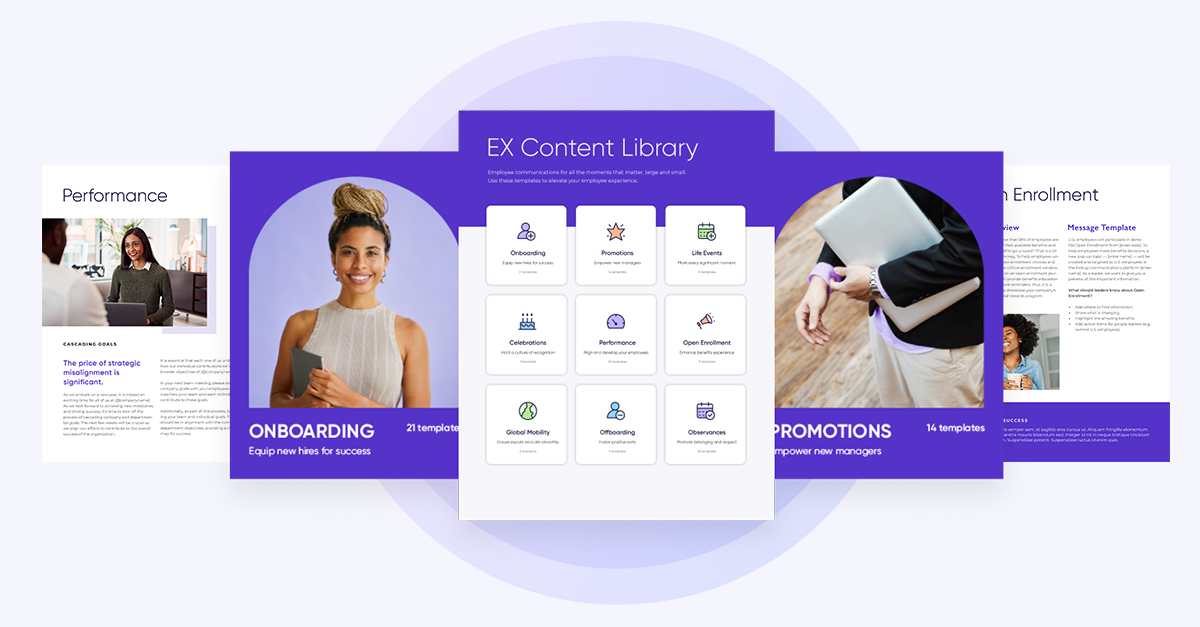Does a CIO impact company culture?
Chief Information Officers (CIOs) play a critical role in shaping the digital workplace, however as the needs of the workplace and its employees continue to evolve, CIOs will not only be at the center of all technological change but cultural change as well.
Workers satisfied with their workplace applications say they’re twice as inclined to stay in their current organization. But 46% say they’re not satisfied.
Gartner 2021 Digital Worker Experience
Company culture is often identified as a leading barrier to digital transformation for business leaders, yet CIOs can make life better for their workforce by making a positive impact on culture and technology. To do this, CIOs will need to address the needs of those not just those at a desk, but also those who are dispersed or on the front line.
Responsibilities of a CIO
A lot has changed since the days of IT keeping the servers running and launching digital initiatives that power entire organizations. The responsibilities of CIOs have expanded.
CIOs now have a substantial impact on organizational performance. Anyone in this position is responsible for shaping the way an entire workforce interacts.
- CIOs are now responsible for company culture. CIOs are already responsible for addressing technology strategy and acquisitions, compliance, cybersecurity, training, budgets, and collaborating with other senior executives in driving the business itself. Now, they will be responsible for building company culture as well. Because CIOs are responsible for leading digital workplace changes, they are responsible for helping employees understand and adopt new technology. CIOs can create culture by helping employees embrace ongoing digital transformations.
- Driving digital workplace initiatives. Technology has changed the way we work. With the addition of so many new tools that alter legacy processes, maintaining an aligned organization is a complex undertaking. Luckily, many new digital tools can help, however, predominantly falls on the CIO to bring in new technologies that simplify workflows and unify the entire enterprise.
CIOs and their impact on internal communication
Communication is critical; in fact, the way CIOs and other executives communicate with the workforce is the heart of any digital transformation. Internal communication shapes the way all employees engage with their jobs, coworkers, and organization. To keep employees informed, you need to have the technology to reach every worker. This means optimizing communications for your employee’s experience.
“Communications are primarily about meeting people where they are. That’s so much of what makes for good communication. It lets people work where they want to work, it lets people consume information in the way they want to consume it, in the time they want to consume it. It gives them the flexibility to blend that life experience with work experience. ”
Susan Gerock, CIO at Washington REIT
Having the right digital toolkit can positively impact your employees’ experience at your enterprise. The CIO is in a unique position to influence the employee experience because they lead technology acquisition decisions at an organization. Communication is the foundation for building the right toolkit. Choosing the technology that will empower your workforce means meeting your employees on their preferred channels, devices, and mediums.
Companies that communicate effectively rise above the rest
Communication plays a large role in shaping the employee experience. Enterprises that communicate effectively enjoy higher levels of workforce engagement. As engagement increases, teams become more informed and connected with their organization.
IDC predicted that 70% of all organizations will have accelerated use of digital technologies by 2022, transforming existing business processes to drive customer engagement, employee productivity, and business resiliency.
Better communication can also lower your turnover rate as employees are happier and less likely to job hop. With all these positive effects, it is highly valuable to invest in your communications strategy.
How CIOs improve employee experience
- Adopt the right technology. While this tip may seem intuitive, providing your workforce with the type of tools they need can often be quite challenging. Surveying your workers and discovering what technology they need to succeed is vital to improving your digital toolkit. Creating a comprehensive digital suite involves constantly adjusting your strategy. Measuring the impact of your tools can help you figure out where are the holes in your digital strategy.
- Make your communication mobile. Meeting your employees on their preferred form of communication is vital to creating a positive employee experience. The vast majority of employees use mobile phones all the time in their personal lives, and they want to use those devices at work as well. As workforces become more distributed, it is important to have communications available on mobile. Having a mobile app is an easy and convenient way for your workforce to get company updates and stay informed.
- Personalize your communications. As frontline workers continue to make up a larger segment of the global workforce, it is important that you convey that you care about their work experience. The more an employee feels noticed by an organization, the more likely they are to put greater effort into their work. Personalizing your communications to different workforce segments is a great way to keep people engaged and motivated.
How CIOs can make the digital workplace a reality
Your digital workplace drives business performance and organizational success. CIOs can create an amazing digital workplace by ensuring that their employees get the tools they need and adopt technologies easily. Here are six best practices for building a comprehensive digital workplace.
- Encourage culture change. Most organizations have not yet made the cultural and procedural changes necessary to ensure success with their digital transformations. Cultural change is vital because employee engagement sits at the center of workplace transformations. Workforces are multigenerational, dispersed, and rely on technology to get their jobs done. Shifting attitudes towards change and digital skill acquisition will play a greater role in making hiring decisions. CIOs can help manage this transformation by encouraging the adoption of new skills and flexible work arrangements.
- Scale digital business. Digital has become mainstream. IDC predicts that 60% of enterprises will invest heavily in digitalizing employee experience in 2021, transforming the relationship between employers and employees. Scaling a digital business is a matter of increasing volume, scope, and agility. Increasing scope means providing a variety of digital services so more employees can use them.
- Allow employees to lead transformations. IT used to enforce technology adoption. Now, so many employees are used to using technology that they don’t need help with adoption. Instead, empower employees to have input into which tools they’d like to use. Your employees are your technology users; they should guide you toward choosing the best solutions for your company. A CIO’s role is to guide their workforce and increase the ease of adoption.
- Work is no longer strictly confined in the office. IT can no longer realistically expect to control everything on their workforce’s devices. Locking out social media or other non-work-related apps will only frustrate your workforce. Enabling employees to access data or files from their own devices and out of the office will enable your modern workforce to produce work on their own time.
- Partner with HR. While it can be easy to pass off cultural change to the HR department, digital transformations have blurred the lines between an organizational change and a technological reform. Company culture and technology go hand in hand. CIOs need to lead digital changes by providing oversight and awareness. CIOs can manage organizational technological changes by partnering with HR to ensure that digital tools are being adopted.
- Use your data. Every company collects data on its workforce. To get benefits from that data, however, you need to use it appropriately and strategically. CIOs are in a unique position to have access to the entire organization’s data. They are able to understand and interpret that data in a way that benefits the entire enterprise. The difference is in how CIOs can communicate what steps the company needs to take based on what they are seeing in the data, improving the employee experience with a digital workplace platform that integrates systems, software, and communications channels.
The CIO’s role in communications and technology
As the digital workplace continues to drive business goals and performance, CIOs will play a larger role in shaping the employee experience. CIOs can positively affect their workforce by encouraging a company culture that embraces change and a flexible, empowered approach to using technology. Best practices for CIOs include the following.
- Making user-led technology decisions
- Encouraging cultural change that embraces quick tech adoption
- Using data to make organizational actionable insights
- Communicating with your workforce to uncover their digital preferences
Learn more on how CIOs can make an impact in today’s organizations. Read our new guide, Digital Transformation for CIOs: 7 Steps to Success.







